Author: John
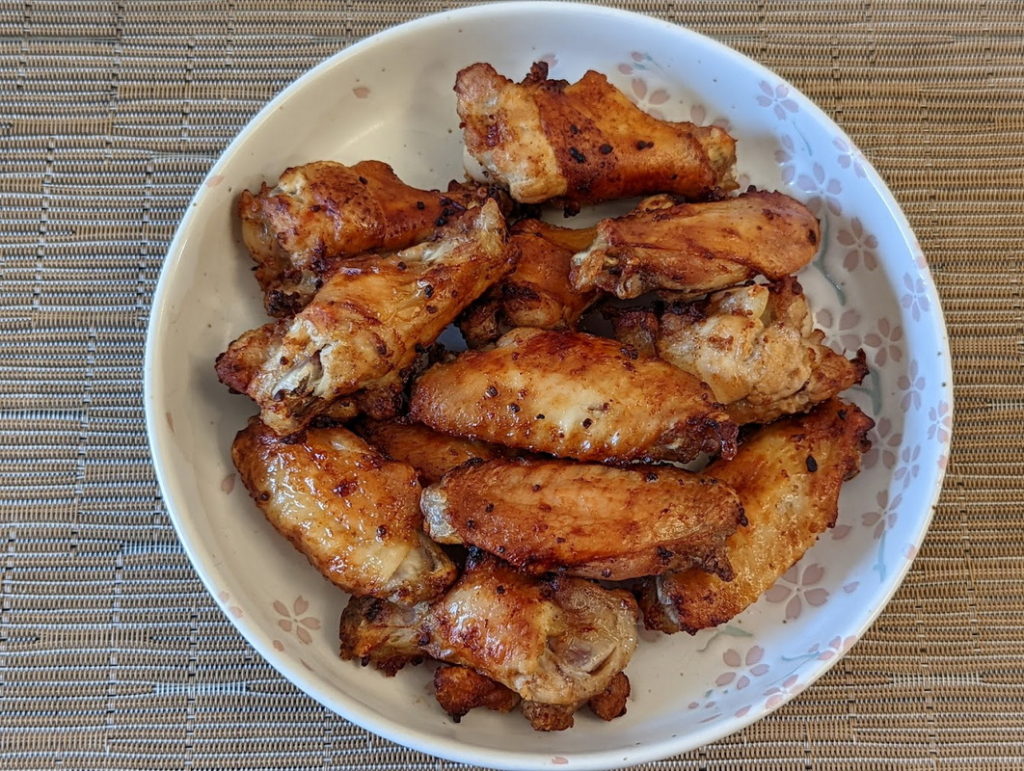
This recipe is baked, not deep-fried. Makes crispy, juicy wings.
Prep Time: 10 Minutes Cook Time: 40 minutes Servings: 2
INGREDIENTS:
6-10 chicken wings (get plump party wings); or 6-8 thigh
3 tablespoons olive oil
3 cloves garlic, minced (or 3 tsp. of minced garlic from jar)
1/2 teaspoons chili powder
1 teaspoon garlic powder
1/2 tsp. salt, and ground black pepper to taste
DIRECTIONS
1. Preheat the oven to 400° F (convection)
2. Combine the chicken, olive oil, garlic, chili powder, garlic powder, salt, and pepper in a large mixing bowl. Arrange the chicken wings on a baking sheet.
3. Cook the wings in the preheated oven 40 minutes (turn over at 20 min.), or until crisp and cooked through.
AIR FRYER CHICKEN WINGS (20-minute cook time):
INGREDIENTS
- 1.5-2 lbs party wings cut into drumettes and flats (e.g. Fred Meyer Foster Farms Organic)
- Seasoning is the same as above.
DIRECTIONS
- Set Ninja Air Fryer at “Air Crisp” for 17 minutes at 300°F.
- Place the chicken wings into the Ninja Air fryer.
- Lift the cover to check doneness.
- When the time is up, flip the wings over, increase the temperature to 390°F, and bake for 5 more minutes until the skin is browned and crisp.
- Transfer to a bowl.
Date: August 17, 2015 Publication: Daily Health News
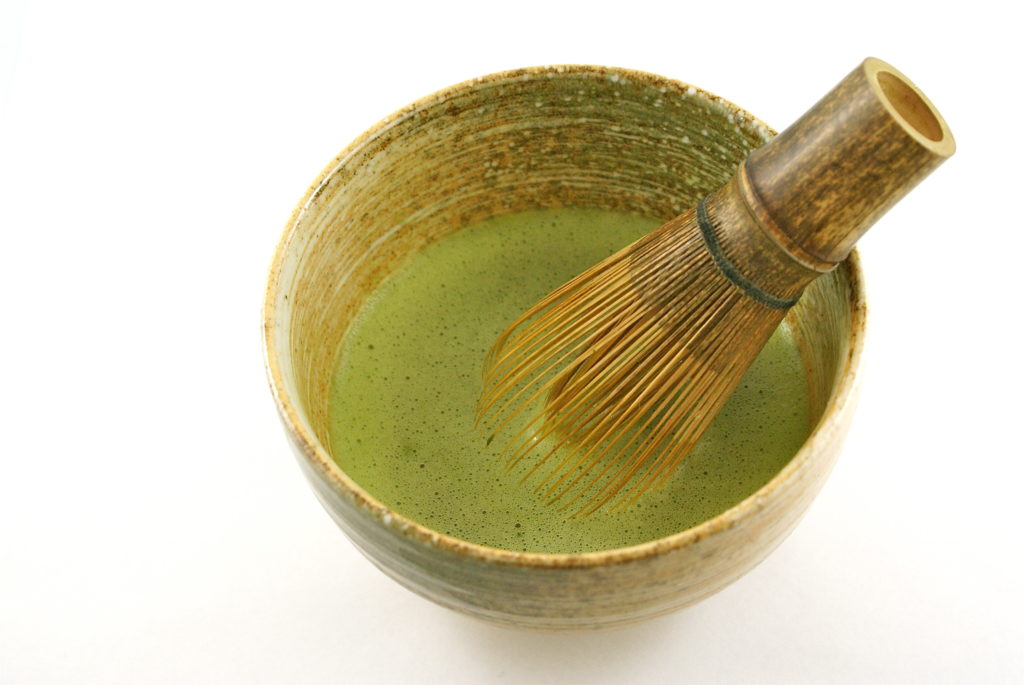
You know green tea is really good for you. Its antioxidant compounds show up in studies as protective against heart disease, diabetes, cancer, dementia, obesity and more. But you’re probably not going to start drinking four or more cups every day—even 10 cups a day in some studies—like many Chinese and Japanese people do.
The models at Fashion Week in New York City had a solution. Backstage, for energy and Zen balance, they sipped little shots of matcha green tea, a specific kind that contains unusually high levels of antioxidants. There’s also matcha tea powder that has become today’s “it” ingredient in everything from smoothies to latte to fruit pops to very, very green muffins. Matcha, it seems, is suddenly and literally on everyone’s lips.
Does it deserve the hype? There’s no question that it can be a very healthy beverage or even recipe ingredient. But now that it’s a fad, and everyone’s getting into the act, be careful about matcha products that are unhealthy—or even unsafe…because they are contaminated with heavy metals. So it pays to be matcha savvy. Here’s what you need to know to safely benefit from this unique form of green tea.
GOOD STUFF IN A SMALL PACKAGE
For matcha, concentration is the name of the game. It’s made from green tea, so it contains the powerful antioxidant epigallocatechin gallate (EGCG), responsible for many of green tea’s health benefits, as well as the amino acid L-theanine, which has antianxiety properties (more about that in a moment).
It has about three times as much EGCG as standard brewed green tea, according to some estimates. It also has about as much caffeine as a cup of coffee.
How does matcha deliver this bioactive bounty? It’s a combination of how it’s grown and how it’s prepared. Unlike with other varieties, a few weeks before harvest, the plant is covered from the sun, which causes it to produce more EGCG and L-theanine. Another unusual step: After harvest, the leaves are ground into a fine powder. And matcha is also prepared differently. When you drink matcha, you’re actually drinking a “suspension” of ground leaves infused in water, rather than a typical brew where leaves are steeped and then removed from the cup or pot. Hence, you are actually consuming the leaves and, along with them, more green tea compounds.
The L-theanine may be responsible for one of matcha’s coveted benefits—a pleasant sense that users say it brings that may be described as “alert calmness.” Credit caffeine for the alertness, of course. L-theanine, on the other hand, has been shown in studies to reduce anxiety.
MATCHA DOs—AND ONE BIG DON’T
Matcha has long been appreciated in the East. In Japan it forms part of the traditional tea ceremony and is the most revered form of tea. Because matcha involves consuming the entire tea leaf, however, the origin of any matcha powder you consume is extremely important for your safety. Here’s what you need to know…
• Tea plants grown in soil that is contaminated with lead will absorb it into the leaves, and, because you are consuming the entire leaf, more lead may wind up in your cup. In one study from the research organization ConsumerLab, tea grown in China had high lead concentrations.
• Your best bet: Stick to matcha teas grown in Japan, and look for brands that report consistent testing for the presence of heavy metals. In the ConsumerLab’s study, for example, the one tea tested that came from Japan, Teavana, had no detectable lead.
• The highest-quality matcha comes from the southern regions of Japan—Kyushu, Nishio, Shizuoka and Uji.
• Good-quality matcha is bright, vivid green and will have a find powdery consistency—anything yellowish or coarse is not likely to taste very good.
• Expect to pay about $26 to $32 for a standard 30-gram tin (about an ounce). Anything cheaper is not likely to have good flavor.
• One cup of matcha calls for about one gram of dry powder, so a 30-gram tin should give you a cup of matcha tea every day for a month. (You can get a special measuring spoon from a matcha supplier, along with a whisk to prepare the tea in a bowl.)
• Now that matcha has become popular in the US, some prepared versions may have plenty of added sugar. Skip them, and make the real thing yourself.
• Ready to try it? Here’s a quick video tutorial from Kenko Tea, an Australian brand that gets its matcha from the Nishio region of Japan and ships worldwide. Other reputable brands include DoMatcha, and MidoriSpring.
So go ahead, enjoy your own tea ceremony. Matcha has a grassy, slightly bitter flavor…some people compare it to that of kale or spinach. You can try it the traditional way or experiment with adding the powder to recipes. Just remember that tossing matcha into your 1,000-calorie ice cream milkshake doesn’t suddenly turn it into a health drink!
This info from fedupmovie.com
See: Dr. Robert Lustig Videos:
Sugar: the Bitter Truth
Fat Chance: Fructose 2.0
60 Minutes
1980: Childhood Type 2 diabetes: 0 cases.
2010: 57,600+ cases
1977, Because of McGovern Report, food industry started taking fat out of foods, and replacing it with sugar. Between 1977 and 2010, average consumption of sugar by Americans doubled.
Ignore calories in/calories out prescription. It’s not about exercise. It’s about too much processed sugar in.
AHA daily allowance of added sugar: 6-9 tsp. (4 grams per tsp). 36 grams max. a day.
Food addiction is real, not a metaphor. People’s responsibility doesn’t work in the face of addiction. Don’t have addictive food in the house.
WHO TRS-916. Sugar is the major, if not the cause of chronic metabolic disease and obesity. No more than 10% of daily should come from sugar. USA extorted WHO to stop publication of report. 4 calories in one gram of sugar. 4×36 = 144 calories. 10% of 1,500 calories = 150 calories.
Simple carbs (e.g. white bread, white rice, processed cereal) act the same as sugar in the body.
One can be metabolically obese and normal weight, and in danger of heart disease, diabetes, etc. Tofi = Thin on outside, fat inside. DEXA scan = measures internal body fat. Belly fat is the dangerous fat. 40% of normal weight have metabolic disease.
Insulin coverts sugar to fat storage.
Review: Yama Sushi and Izakaya
For my birthday dinner, Xue and I went to Yama Sushi on SE Clinton. I started with Yoshi Dry Sake:
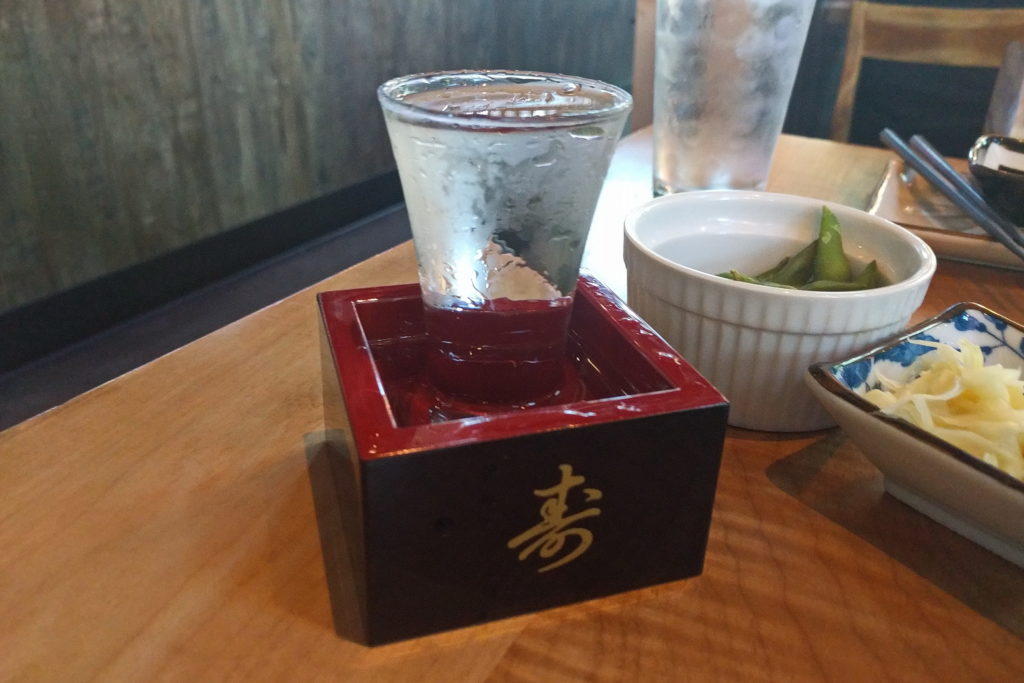
The friendly waitress says the liquid in the box is sake (not water), and after the glass is finished; it can be poured into the glass, or drank out of the box. Nice.
The Chirashi entree is quite filling. A lot of varied seafood packed into this delicious box. Especially good was the large and unctuous salmon eggs, plus uni that can be mixed with the underlying rice using chopsticks.
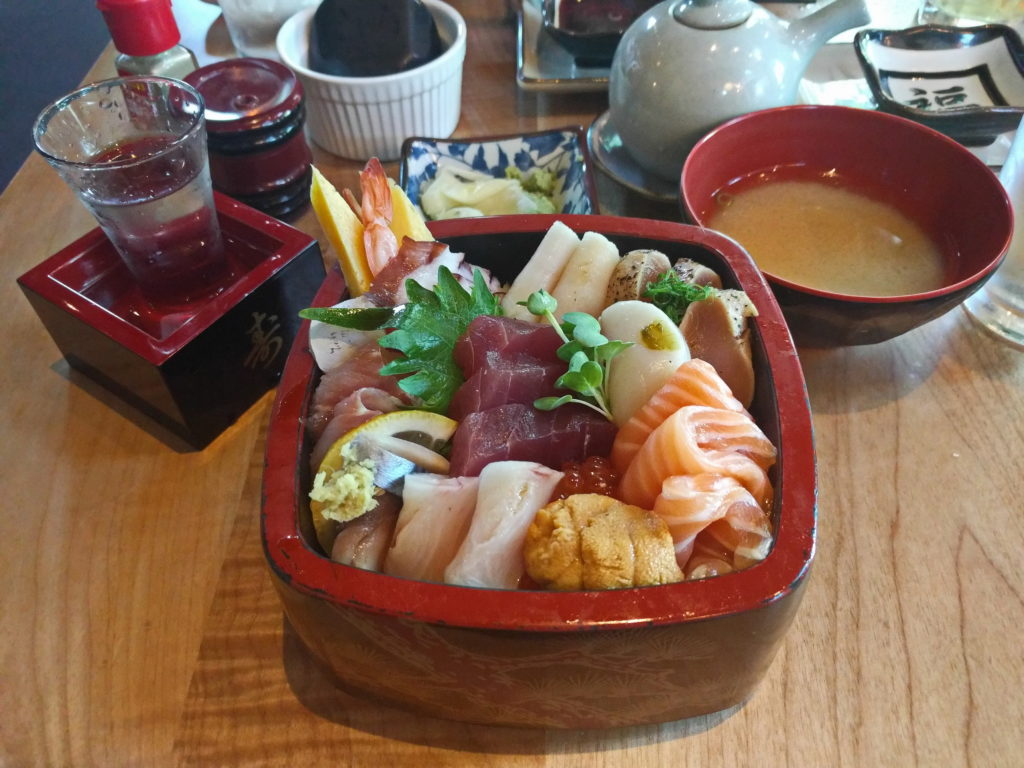
For dessert, unfortunately, the anticipated Coffee Gilee was out. The waitress explained that the chef makes it on on Saturday, and it often runs out by Friday. She recommended the Strawberry Panna Cotta instead if we wanted a light dessert to suit the hot weather; saying that it is lighter than the Italian version, and the housemade strawberry sauce is mixed with balsamic vinegar to tone down the sweetness. Mix the three layers together for the best taste, she suggested. Excellent recommendation.
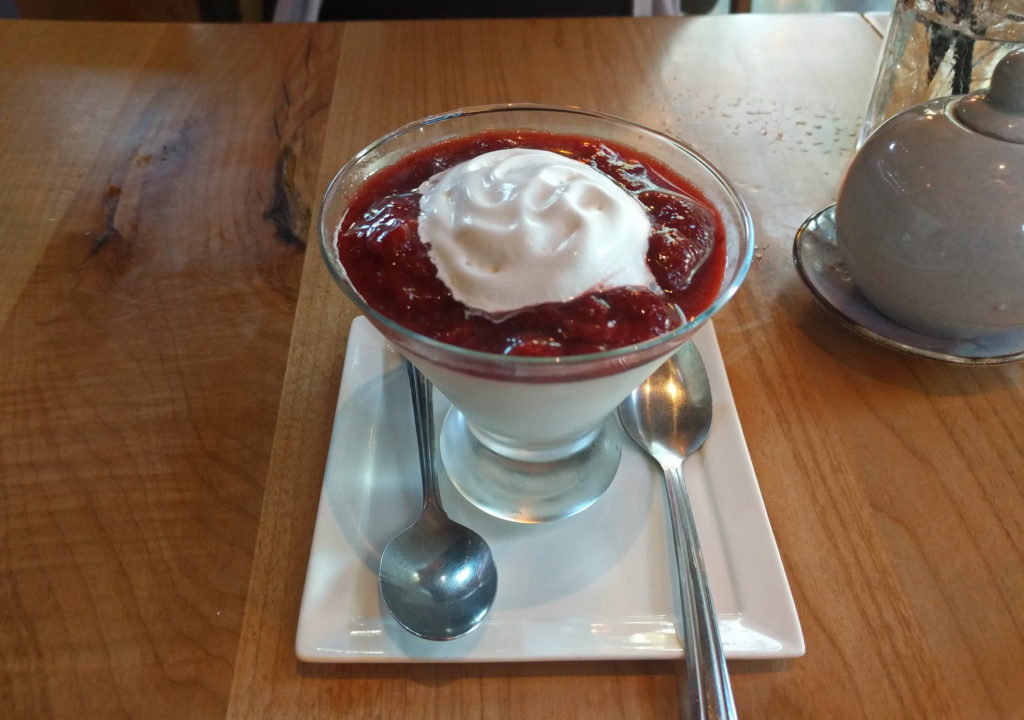
Xue had the Nikumiso (spicy ground pork) ramen, and rainbow roll (mango, avocado, and spicy tuna) which she enjoyed (sorry no photos).

Miso-Glazed Black Cod
“This is my take on the oft requested miso-glazed, black cod, made famous by chef Nobu Matsuhisa. In addition to a taste and texture to die for, this is one of the easiest fish recipes of all time. A couple minutes to make the sauce, some brushing, a short wait, and you’re broiling. By the way, I don’t like to cook both sides. I like the heat to only penetrate from the top down. This makes for a lovely caramelized top, and a super juicy interior. Cooking times will vary, but simply broil the fish until the bones pull out with no effort, and the meat flakes.”
Ingredients
- 3 tablespoons white miso paste
- 2 tablespoons water
- 2 tablespoons mirin (Japanese sweet wine)
- 2 tablespoons sake
- 1 tablespoon brown sugar
- Some minced ginger (suggested by Ling)
- 2 (7 ounce) black cod fillets
Directions
- Set oven rack about 6 inches from the heat source and preheat the oven’s broiler. Line a baking sheet with aluminum foil and lightly grease the aluminum foil.
- Whisk miso paste, water, mirin, sake, and brown sugar together in a small skillet over medium heat until mixture simmers and thickens slightly, 1 to 3 minutes. Remove from heat and cool completely.
- Place cod fillets on prepared baking sheet. Brush fillets all over with miso mixture. Rest fillets at room temperature to quickly marinate, 15 to 20.
- Broil fillets in the preheated oven for 5 minutes. Turn the baking sheet 180 degrees and continue broiling until fish flakes easily with a fork, about 5 minutes more. Sprinkle lightly with salt.
The following notes are from Prof. John Tchen’s talk “Yellow Peril” at the Oregon Historical Society on May 25, 2016:
—-
Most Americans don’t know about the “Chinese Exclusion Act” passed by Congress in 1882 that stopped Chinese immigration with a few exceptions. The law wasn’t truly abolished until 1965. How did it happen? Especially in view that:
1) China Trade was an important part of the U.S. economy in late 1800’s.
2) Desirability of Chinese goods such as silk, carvings, porcelain, and tea; and the influence of Asian art (on American painter James Whistler and others) gave a prestige to Chinese culture.
3) Burlingame Treaty of 1868 between the U.S. and China that promoted free exchange of people, goods, and ideas between the two countries. Chinese immigration was encouraged.
How Chinese Exclusion Act came to be:
Unemployment, concentration of wealth in the few (the Gilded Age of 1870 – 1900), and the “long depression”; led to labor unrest and violence against Chinese. One example, the 1877 San Francisco “sand lots” riot:
https://en.wikipedia.org/wiki/San_Francisco_riot_of_1877
Anxiety, loss, and fear led to the “yellow peril” becoming part of working’s man psyche. Workers feeling of loss led to feeling that they could reclaim power by voting for the right politician.
Chinese laborer as “yellow peril” became a whipping boy for political parties because Chinese people in America did not have political allies and no voting power.
Eugenics movement fed racism. Center of Eugenics movement was New York City!
https://en.wikipedia.org/wiki/Eugenics_in_the_United_States
“The Yellow Peril” from Wikipedia:
The Yellow Peril was a racist color metaphor for the Asian races, which is integral to the xenophobic theory that peoples of East Asia were a danger to the Western World; a psycho-cultural vision of the menacing East, more racial than national, derived, not from concern with danger from any one country or people, but from a vaguely ominous, existential fear of the vast, faceless, nameless horde of yellow people opposite the West; the white fear of the rising tide of non–Western colored people.
Culturally, the Yellow Peril is represented in “the core imagery of apes, lesser men, primitives, children, madmen, and beings who possessed special powers”, which are cultural representations that originated in the Græco-Persian Wars (449–499 BC) between Ancient Greece and the Persian Empire; centuries later, the Yellow Peril theory included East Asians.
Has America reconciled with the past? 1870’s rhetoric appears again in 2016 (e.g., China is taking American jobs). See this Citizens Against Government Waste (factually incorrect) video:
Prof. Tchen hopes his talk is more of a dialogue than a lecture.
Election rhetoric where solutions are shallow, and go off in the wrong direction, is still with us. How do we achieve a rational, fair, and just society?
See sociologist Peter Marris’s work on the psychology of loss and uncertainty.
Recent news article describe current sense of loss, anxiety, and fear; in this election year. Anxious in America
Jack advanced a premise that during election cycles, in times of economic loss and uncertainty; politicians play upon fears of the electorate and often immigrants are blamed for problems. There are similarities in the elections of the 1870’s and today’s.
Note: Tchen’s book Yellow Peril is out of print, but another printing is due out soon. A kindle version will not be available because of high royalties needed for rare color photos. I ordered a copy from Amazon.
Some nice easy to follow recipes:
Travel: “Hong Kong Strong”
Brando Li’s brilliant video of Hong Kong…
Health: You better sit down
Sit down on the ground and then stand back up.
Sounds pretty easy, right?
There’s just one catch: You’ve got to do this without using your hands, arms, or knees for support.
Take as much time as you need. I suggest crossing your legs to lower slowly onto the ground, and to rise back to standing — you’ll have more control that way.
And every time you do need to use your hands, arms, or knees — make a note of it.
[ Note: If you’ve got balance issues or are prone to falls, this isn’t for you… definitely skip this test!]
Here’s what it looks like…

I’m sure you’re wondering what, if anything, we can learn from such an unusual “test.”
Well, a 2012 study published in the European Journal of Preventive Cardiology 1 found that these basic physical skills — sitting down and standing up — were huge predictors of longevity.
The study followed over 2,000 men and women ages 50 through 80… and the first thing scientists did was perform a Sitting Rising Test (SRT) — the same test you just tried.
Here’s how they scored the SRT:
- Every participant started with a total of 10 points — 5 for sitting, 5 for rising.
- Every time a participant needed to use their hands, arms, or knees for support, they lost a point.
- A “10” is the best possible score — and a “0” is the WORST. (Scientists considered anything below a 7 to be cause for concern.)
Go ahead, try the test and keep score. You’ll want to know your SRT number…
Because scientists found that of the 159 people who died during the 6-year study, ALL BUT 2 OF THEM struggled on the SRT test — meaning they scored 7 or below.
But they also found that every single point increase in SRT scores led to a 21% improvement in survival. 1
What does that mean for you?
Well, if you scored high on that SRT test, congratulations! You’re most likely in great shape.
And if your score was on the low side, don’t worry — it’s possible to improve your results with just a few exercises:
1) Sitting & Standing:
Just repeating the test over and over again will help strengthen the muscles you need to sit and stand without assistance.
Try to use less support every time until you’re able to do it completely unsupported. (Again, if you’re at risk of falling or getting stuck on the ground, make sure someone is around to help out.)
2) Simple Squats:
Doing just a few squats a day can really help strengthen your leg muscles… and you don’t have to hit the gym to do it.
Simply take a seat in an imaginary “chair” from a standing position, then ease your way back up, in 3 sets of 10, every day. (I actually do this when I’m watching TV.)
3) Practice Planking:
A plank is like the top of a pushup — and when done right, it’s an INCREDIBLE core workout.
Focus on keeping your arms and back straight and your abs pulled in for maximum results… and try to hold it for as long as possible. If you can only hold it for a few seconds, that’s okay – you’ll find yourself getting stronger every time!
Those 3 simple exercises may not seem like much…but if you do them regularly, you’ll see a difference in your SRT score fast.
And you don’t have to spend hours working out, either, just five minutes a day: 2 minutes of squats, 1 minute of planks, 2 minutes sitting and standing.
And remember, every single point you can increase your SRT score could mean a huge boost to your longevity…
And that’s too important to ignore.
To great days ahead,
Dr. Bereliani
